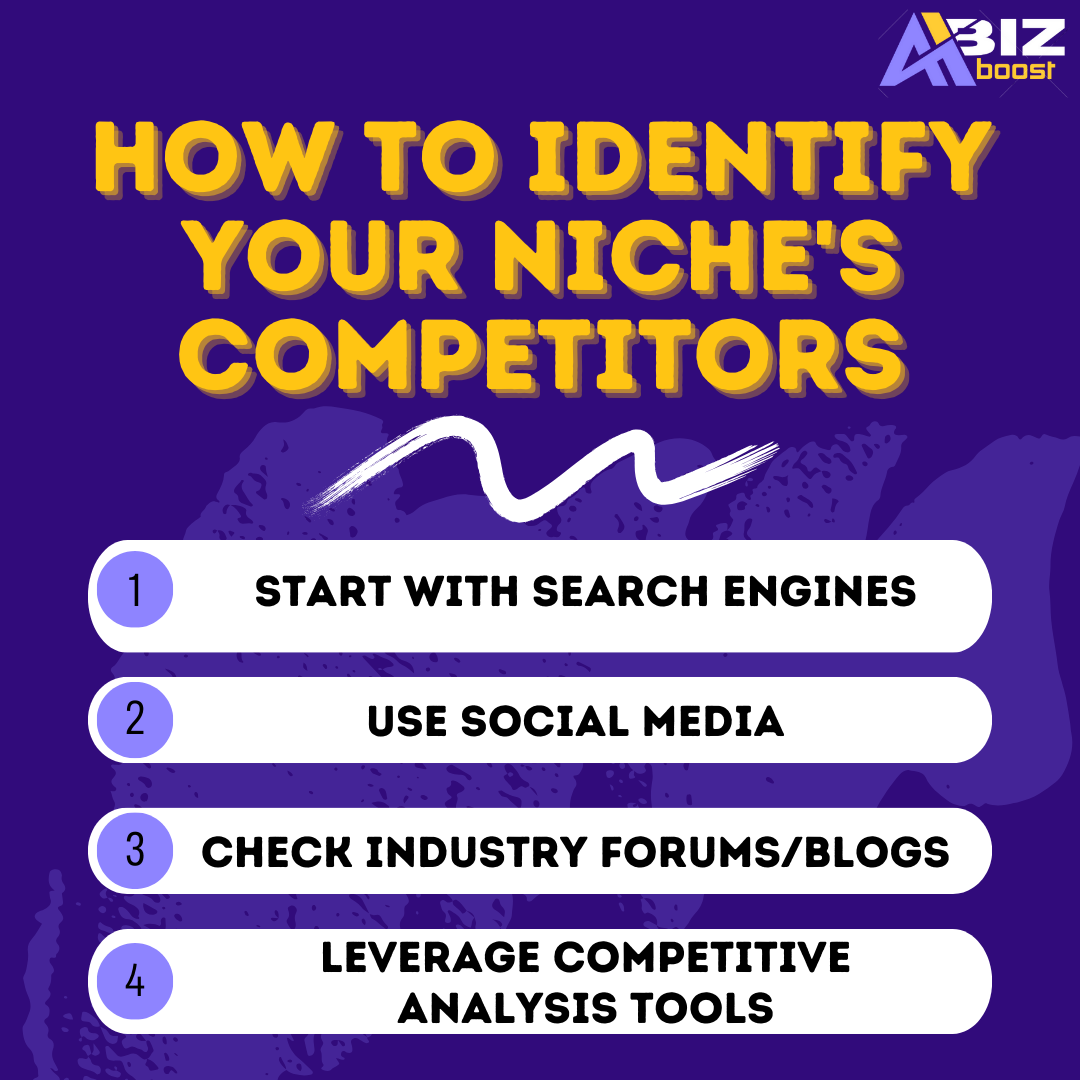
How to Find Your Niche: Selecting a Profitable Niche for a Passive Income Business
Interestingly, 70% of successful entrepreneurs attribute their success to selecting the right niche, a statistic that underscores the importance of aligning your passions with market demands to discover a profitable niche. Utilizing tools like Google Trends, you can strategically analyze these elements to ensure there’s a viable intersection for your business idea. It’s about finding a balance between what you love and what the market needs, aiming for a niche market that’s both relevant and profitable.
When assessing competition and understanding market trends, keyword research becomes an invaluable tool to pinpoint where your passion meets profit. This guide aims to equip you with the knowledge to navigate these waters, leading you to a niche that reflects your interests and serves as a solid foundation for financial success.
Why is this crucial step the key to unlocking your potential in the digital market? Let’s explore.

How to Find Your Niche: Key Takeaways
- Focus on smaller, specific niches with products or problem-solving information for profitability.
- Creativity and unique combinations of topics can create low-competition, successful niches.
- Passion-driven niches enhance content creation, motivation, and reader engagement.
- Assess niche saturation and competition to ensure viability and long-term success.

How to Use Your Interests and Passions for Finding Your Niche
Leveraging your interests and passions is a strategic starting point in helping to find your niche that not only resonates with you but also holds the potential for profitability and engagement. Diving deep into what excites you isn’t just about fulfillment; it’s about discovering a foundation on which you can build a unique and innovative offering. Your passions are a treasure trove of insights and ideas, capable of guiding you towards finding a niche that might be overlooked by others but is ripe with opportunity for someone with your enthusiasm and knowledge.
Your skills and experiences further refine this process, acting as a filter that separates mere interests from potential niches where you can truly excel. Skills acquired over the years can reveal niches that benefit from your expertise, while your unique experiences provide a perspective that can differentiate your offering in the broader market itself.
How to find your niche, therefore, isn’t just about identifying what you love; it’s about strategically aligning your passions, interests, skills, and experiences to carve out a space that’s both meaningful to you and valuable to others. This alignment not only fosters authenticity but also enhances your potential for creating engaging content, products, or services that stand out in a crowded marketplace.

How to Find Your Niche: Market Demand Analysis
How do you assess the demand in your chosen niche market to ensure its viability and profitability? It’s a strategic process that involves comprehensive market research, scrutinizing niche market examples, and pinpointing your precise target audience. You’re aiming for a profitable niche business, that navigates through competition with innovation and insight.
Firstly, dig into market research to grasp the demand curve. This isn’t just about numbers; it’s about understanding behaviors, trends, and gaps you can fill. Look at successful niche market examples. What’re they doing right? How are they engaging their target customers and audience? These insights guide you to tailor your approach, ensuring you’re not just another name in the crowd but a brand that speaks directly to your audience’s needs.
Identifying your target audience is crucial. You’re not aiming to please everyone but to deeply resonate with a specific group. Their needs, preferences, and pain points become your blueprint. This focused approach reduces the scattergun effect and increases your chances of creating a profitable business.
Lastly, don’t shy away from analyzing the competition. They’re not just rivals; they’re case studies. What gaps are they leaving? How can you do it better? This competitive insight is vital in carving out your unique space in the niche market.

How to Find Your Niche With Keyword Research
To select a niche effectively, you’ll need to conduct thorough keyword research to identify demand and competition levels within your areas of interest. This step is crucial for pinpointing a profitable niche that aligns with your goals for a passive income business. Start by utilizing popular keyword research tools to uncover search volumes and competition metrics for potential niches. Look for keywords and related keywords with decent search volume but lower competition, indicating a demand you can fulfill without facing overwhelming opposition. Once you have a broad idea it’s a good sign to start narrowing your business niche.
Next, analyze the keyword difficulty scores to gauge how hard it would be for small businesses to rank for these terms. A niche with moderately competitive keywords offers a strategic entry point for your passive income venture. Remember, selecting a business niche isn’t just about finding an untapped market; it’s about identifying where you can add value and stand out.
Lastly, consider a focus on long-tail keywords within your niche selection process. These are more specific, less competitive, and can drive highly targeted traffic to your site. By focusing on these keywords, for example, you’re more likely to attract an audience genuinely interested in your content, making your niche selection not just profitable but also sustainable for generating passive income.
How to Leverage Niche Market Trends for Discovering Opportunities
After mastering keyword research to select your business niche, you’ll find that staying attuned to niche market trends can unveil many new business opportunities to capitalize on. Identifying profitable niches requires not just a keen eye for current demands but also a strategic approach to predicting future trends.

Here’s how you can leverage niche market analysis for discovering lucrative opportunities:
1. Conduct Regular Niche Market Research: Stay abreast of emerging trends by regularly reviewing industry reports, social media buzz, and consumer behavior studies. This proactive approach can help you spot niche market opportunities before they become mainstream.
2. Analyze Competitor Strategies: Observing how competitors are adapting to changes in the market can offer insights into new areas for growth. Leveraging niche market analysis in this way ensures you’re always one step ahead.
3. Utilize Social Listening Tools: Tools that monitor social media conversations about specific topics can reveal what potential customers are interested in. This real-time data is invaluable for identifying gaps in the market.
4. Attend Industry Events and Webinars: These gatherings are goldmines for learning about future trends and networking with industry leaders. They provide a direct line to what’s next, allowing you free time to adapt and align your strategies with upcoming niche market trends.

Evaluating Profit Potential for Your Top Niche Possibilities
Assess your top niche choices to unlock their profit potential by carefully analyzing market demand, competition, and monetization opportunities. It’s not just about finding a gap in the market; it’s about ensuring there’s a hungry audience willing to spend. Dive deep into niche evaluation to understand the nuances that drive business profitability. This means looking at search trends and how existing products or services are meeting those needs—or failing to do so.
Next, gauge the level of competition. A crowded business niche might seem daunting, but high competition often signals a profitable market. However, you’ll need a unique angle or a better idea to stand out. Consider how you can differentiate your passive income venture, whether through unique content, a novel approach to problem solving, or an innovative product or service offering. Identify problems and create a unique solution to then provide a service for others. Many customers and companies are searching for the product or service you are seeking to provide.
How to Identify Your Niche’s Competitors
Identifying your niche’s competitors involves analyzing the market landscape to pinpoint businesses targeting similar audiences and offering comparable products or services. This step is critical for understanding the level of niche saturation and for strategizing how to differentiate your offering.

Here’s how you can conduct effective competitor research:
1. Start with search engines: Type in keywords related to your business niche and see which businesses appear on the first page. These are your direct competitors.
2. Use social media: Look for groups, hashtags, or pages related to your niche. Social platforms can reveal competitors that may not rank high on search engines but have a strong community presence.
3. Check industry forums and blogs: These can be gold mines for identifying competitors. You’ll find discussions about products, services, and brands that are top-of-mind for your target audience.
4. Leverage competitive analysis tools: Tools like Ahrefs, SEMrush, or SpyFu can provide insights into your competitors’ traffic, keywords, and backlink strategies.
Through careful study of competitors, you’ll gain a deeper understanding of niche competition and be better equipped to carve out a unique space for your small business name. Remember, it’s not just about identifying competitors but also analyzing their strengths and weaknesses to find opportunities for innovation.

How to Define Target Audience Profiling for Your Niche
Why should you invest time and money in profiling your target audience when selecting your niche? Understanding who you’re aiming to serve can dramatically enhance your niche selection process. Audience profiling isn’t just about knowing who your potential customers are; it’s about deeply understanding their needs, preferences, and behaviors. This step enables you to tailor your offerings more precisely and stand out in a competitive market.
By conducting thorough market research, for example, you can gather valuable insights into your customer base, demographics, interests, and purchasing habits. This information is crucial in identifying a niche that not only interests you but is also viable and profitable. Remember, a well-defined target audience allows for more targeted marketing strategies, leading to higher conversion rates and customer loyalty.
Additionally, audience profiling aids in content creation. Knowing your audience’s challenges and questions enables you to produce content that resonates with them, further establishing your authority within your chosen niche. To innovate and capture the market, you can’t overlook the importance of audience profiling in niche selection. It’s the foundation upon which successful businesses are built, ensuring your offerings meet the exact needs of customers within your target market.
How to Find Your Niche Using AI Software & Tools
Having established the significance of audience profiling in niche marketing and selection, let’s explore how AI software and tools can streamline the process of finding your ideal niche. Utilizing advanced algorithms, these tools offer a sophisticated approach to niche research, ensuring you’re not just guessing but making informed decisions grounded in data and trends.

Here’s how you can leverage AI for niche selection:
1. Niche Identification: AI software scans vast data pools, identifying emerging trends and underserved markets. This helps you spot profitable niches before they become oversaturated.
2. Keyword Analysis: Dive into niche markets for profitability with AI-driven keyword tools. They assess search volume, competition, and potential revenue, guiding you towards niches with high demand yet manageable competition.
3. Audience Insights: Uncover what your potential customers are seeking. AI tools analyze online behavior and discussions, offering deep insights into customer needs and preferences, crucial for successful niche selection.
4. Competitor Analysis: Evaluate your competition with AI. By analyzing their performance, you can identify gaps in the market and opportunities for differentiation, ensuring your niche isn’t just unique but also profitable.
Incorporating AI into your niche research isn’t just innovative; it’s a strategic move towards ensuring the niches you consider have the potential for growth and profitability.

How to Find Your Niche: Frequently Asked Questions (FAQs)
How Do I Handle Legal Considerations and Copyright Issues When Creating Content for My Niche?
To handle legal considerations and copyright issues, you’ll want to research relevant laws, cite sources carefully, and use original content. Consider consulting a legal expert to navigate complexities and protect your work effectively.
What Strategies Can I Use to Retain My Audience’s Interest and Loyalty Over Time in My Niche Market?
To retain your audience’s interest and loyalty, consistently deliver unique, high-quality content that solves their problems. Engage with them through comments and social media, and regularly update your offerings based on their feedback, ideas and emerging marketing trends.
Can I Pivot My Niche Focus After Establishing My Website, and if So, How Should I Approach This Change Without Losing My Audience?
Yes, you can pivot your niche, but it’s crucial to gradually introduce new topics to maintain your audience’s interest. Analyze their feedback and adapt strategically to ensure a seamless transition without alienating loyal followers.
How Do I Measure the Success of My Niche Website Beyond Just Financial Metrics?
It’s not always about more money, to measure your niche website’s success, it helps to track engagement metrics like visitor comments, social shares, and time on page. These indicators reveal your content’s impact and audience connection, guiding strategic improvements and innovation.
What Role Does Community Engagement Play in Building Authority Within My Niche, and How Can I Effectively Foster This Community?
Community engagement’s the glue binding your niche authority. You’ll foster this by actively listening, responding, and creating value-driven content. Think of it as cultivating a garden where each interaction seeds trust and growth.
How can I use Google Trends to find a profitable niche?
Google Trends is a powerful tool for identifying your niche businesses and markets with growing interest. By inputting keywords related to your potential niche, you can analyze search trends over time and across specific regions. This data helps in identifying new business opportunities using a niche idea that is gaining popularity, allowing you to position your niche business effectively to meet emerging demands.
What factors should I consider when determining the viability of a niche?
When evaluating a niche, consider a few factors such as market demand, competition levels, and your business’ own core strengths. Analyze market examples of niche businesses for insights into what works and identify any gaps you can fill. A viable niche should have a clear target audience, room for growth, and align with your interests and expertise.
How can I reduce marketing costs while targeting relevant customers?
To optimize marketing efforts and minimize costs, focus on a target audience with precise needs. Utilizing targeted marketing strategies such as SEO, content marketing, and social media advertising can help you make money and reach relevant customers more efficiently. Offering a free tool or resource as part of your marketing can also drive traffic and attract potential customers without a significant financial investment.
What are some strategies for building a loyal customer base in niche markets?
Building brand loyalty in niche markets involves consistently delivering value and exceeding customer expectations. For niche industries, like the pet industry, offering high-quality products, personalized services, and engaging with your community can foster loyalty. Implement loyalty programs or exclusive offers to reward existing customers and encourage repeat business.
How do I identify the specific audience for my business niche?
Identifying your specific audience involves understanding who your products or services are for and what unique problems they solve. Conduct market research to gather insights into your audience’s demographics, interests, and pain points. Surveys, social media analytics, and customer feedback can provide valuable information to tailor your own service offerings.
What steps should I take if I want to expand my niche business into the mass market?
Expanding into the mass market requires careful planning and adaptation. Start by assessing your current niche to identify scalable aspects of your business. Gradually introduce new products or services that appeal to a broader audience while maintaining your unique selling points. Market research and customer feedback are crucial during this transition to ensure you meet the needs of a larger market without losing your niche identity.
How can AI tools aid in finding a niche and conducting market research?
AI tools can significantly enhance market research by analyzing vast amounts of data to uncover trends, customer preferences, and gaps in the market. They can help identify high-potential niche ideas, conduct keyword analysis for SEO, and offer insights into customer behavior. Leveraging AI in your research process allows for more informed decision-making and strategic planning.

Conclusion
In the garden of the digital landscape, you’ve now got the seeds of knowledge to plant your business idea or niche. With the right care—analyzing demand, researching keywords, and understanding the climate of market trends—your passion can bloom into a profitable entity.
Remember, the soil of competition is fertile with insights, and by knowing your audience, you’re watering your niche for growth. Leverage AI as your gardening tool, and watch as your passive income business flourishes in this carefully chosen plot.


